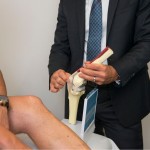
Winter is over and the warm weather beckons, but are your joints ready for a seasonal jump back into activity?
It’s quite common for many of us during winter to go into hibernation mode, and it usually comes with a dramatic reduction of exercise compared to the warmer months.
One of the most common causes of injuries in spring, is when we try to pick up our activity and fitness regime that we had in autumn. So, if you haven’t maintained the same levels of exercise during winter, you need to rebuild your muscle strength to avoid stress and injury to your joints.
Spring Joint Health Rule Number 1:
Always warm up. Whether you are playing in a competition or just working out for fun and relaxation, it’s important to warm up and ease into it. This can mean practicing a few weeks beforehand to get back into the groove and help your body adjust. This will make it easier on your joints and help to prevent an injury that will sideline you for the season.
Spring Joint Health Rule Number 2:
Stretch every day – even if you don’t have a game. As little as 10 minutes stretching each day helps to keep your muscles active and allows them to recover from activity. Remember if your muscles are working properly, they protect your joints.
Spring Joint Health Rule Number 3:
Recondition your core. Before jumping back into spring sports, get your core muscles reactivated. These include your lower back and abs, hips, glutes, and pelvis. Good strength in your core muscles gives you better balance and stability and therefore helps prevent injury to your joints.
The golden rule!
Whether you are a keen amateur, an aspiring professional athlete or just want to keep fit and healthy, regular daily exercise is essential for joint health.
Remember to include 20 minutes of stretching warm up and warm down before a game – and even when you don’t have a game, stretch every day!
If you’ve had an injury during winter, it doesn’t mean your permanently sidelined.
Start by comfortable stretching and light weights to allow your body to regain strength and flexibility. Find a low impact exercise routine that limits stress on your joints such as swimming, yoga, or tai-chi so you can work out pain free and give your joints a chance to recover.
If you’re injury is serious and the pain levels have not decreased or abated, you may need a professional examination and assessment.
How can Dr Shidiak help?
Dr Shidiak is experienced in dealing with patients at all levels of fitness and physical condition from professional athletes who have suffered a traumatic sports injury to arthritic patients who require a joint replacement. If you would like to arrange for a consultation with Dr Shidiak, please contact our reception team on 02 9806 3333 today for an appointment.


